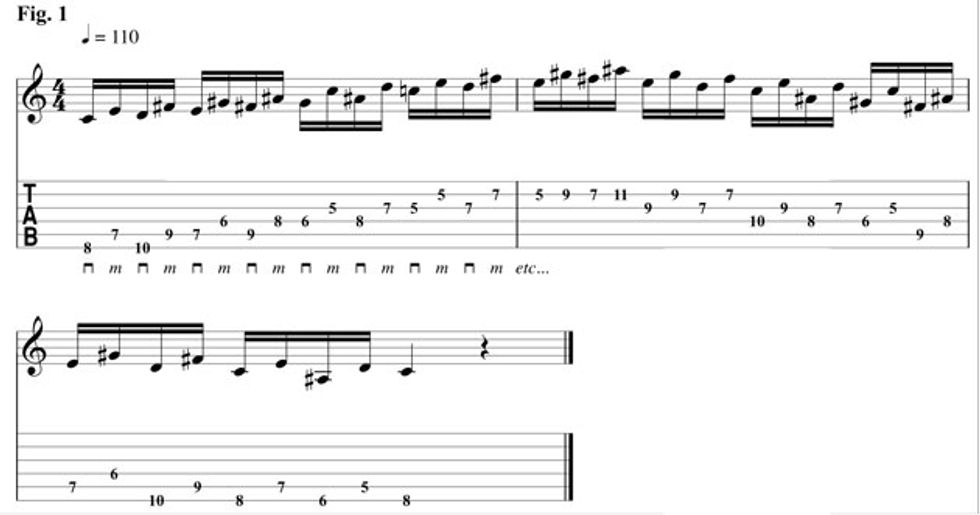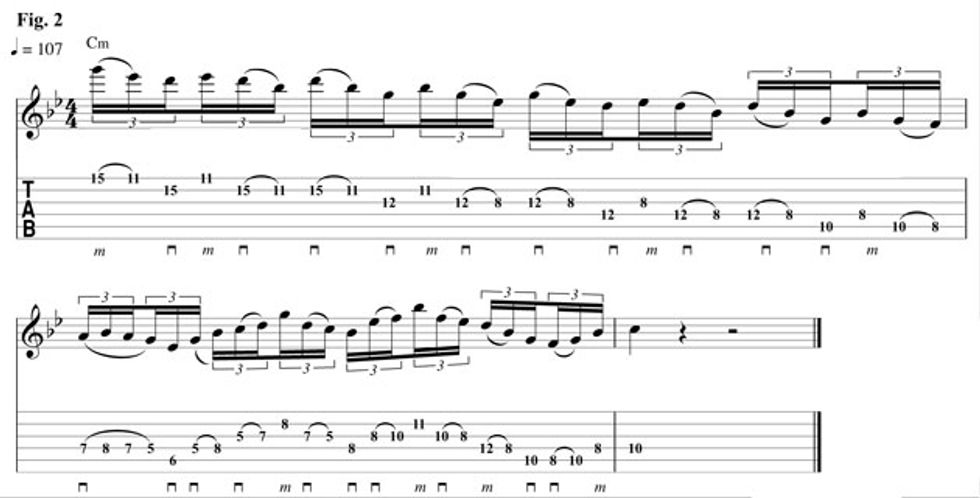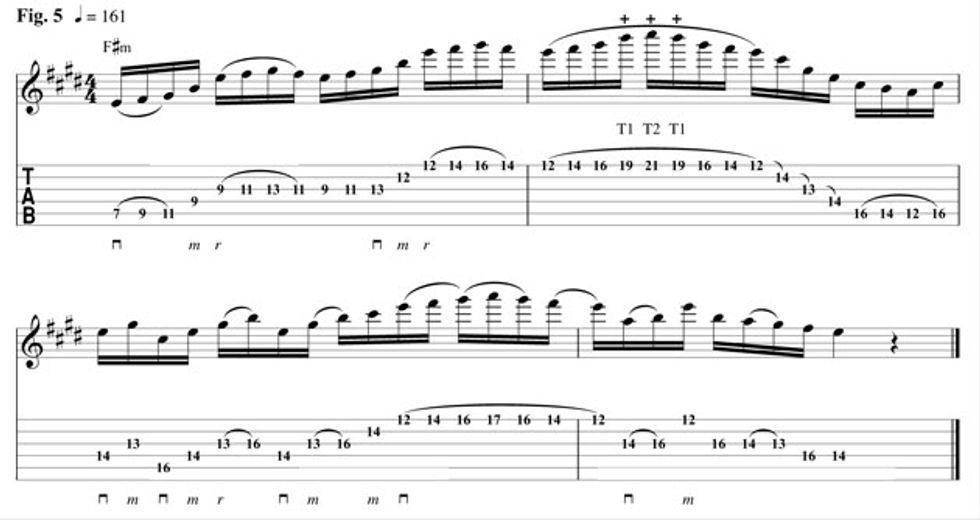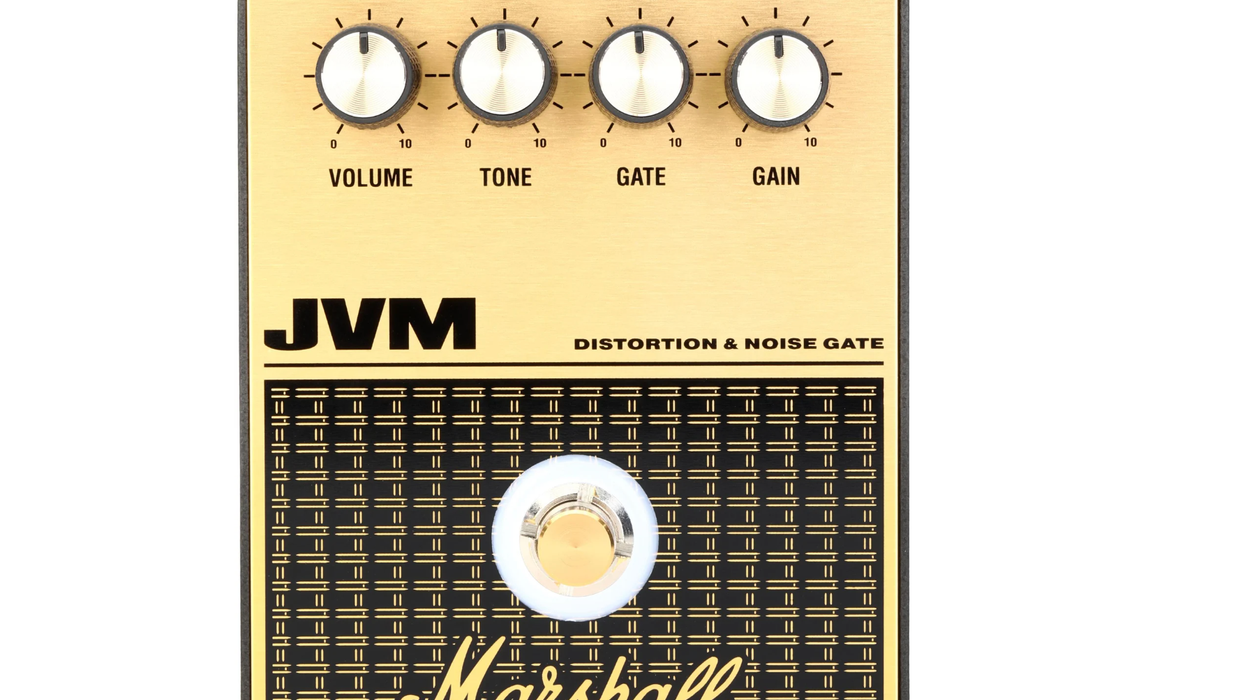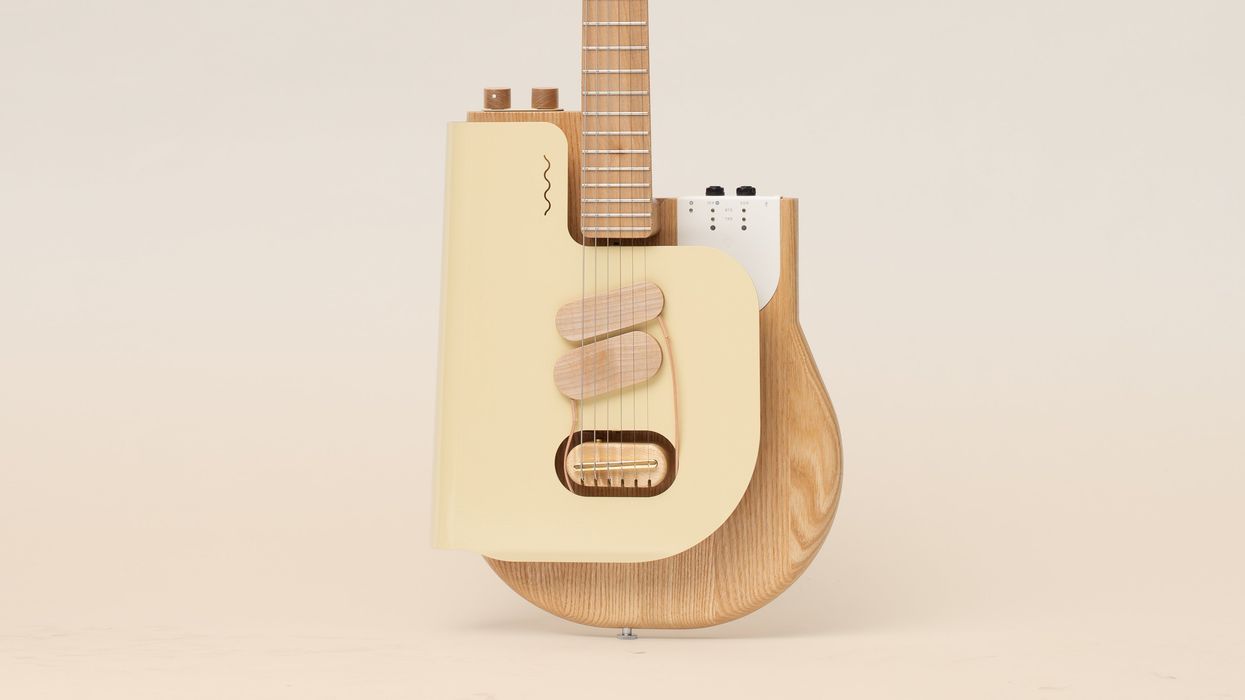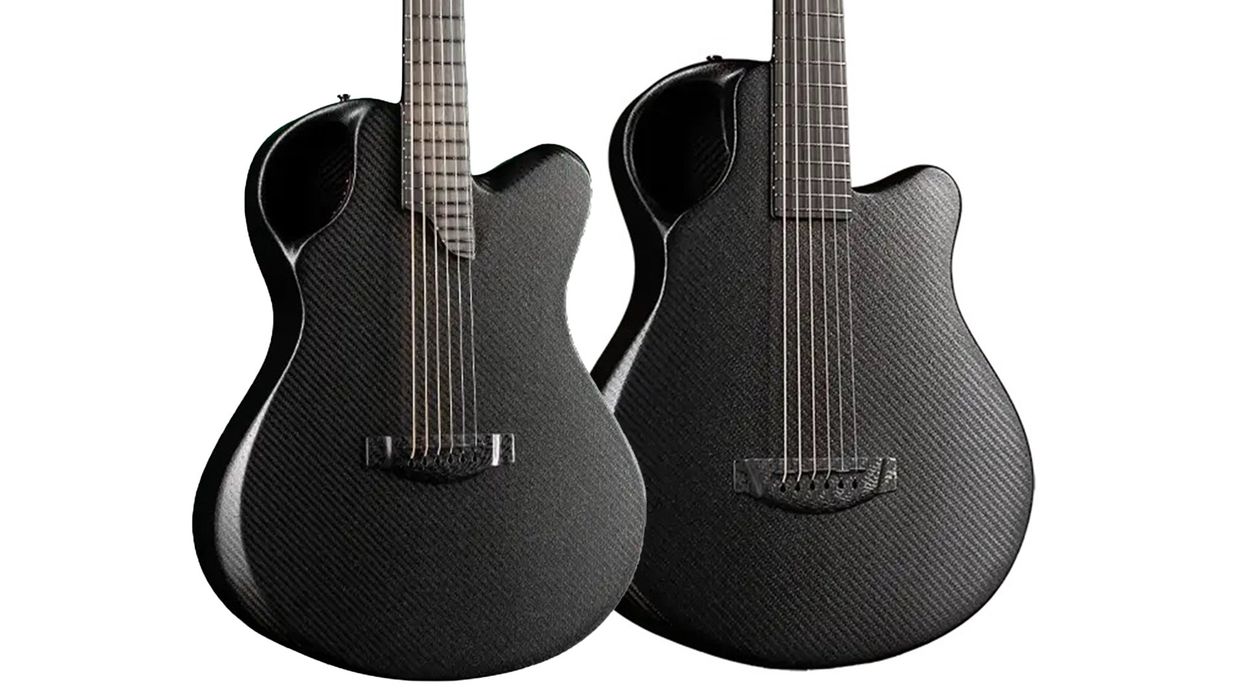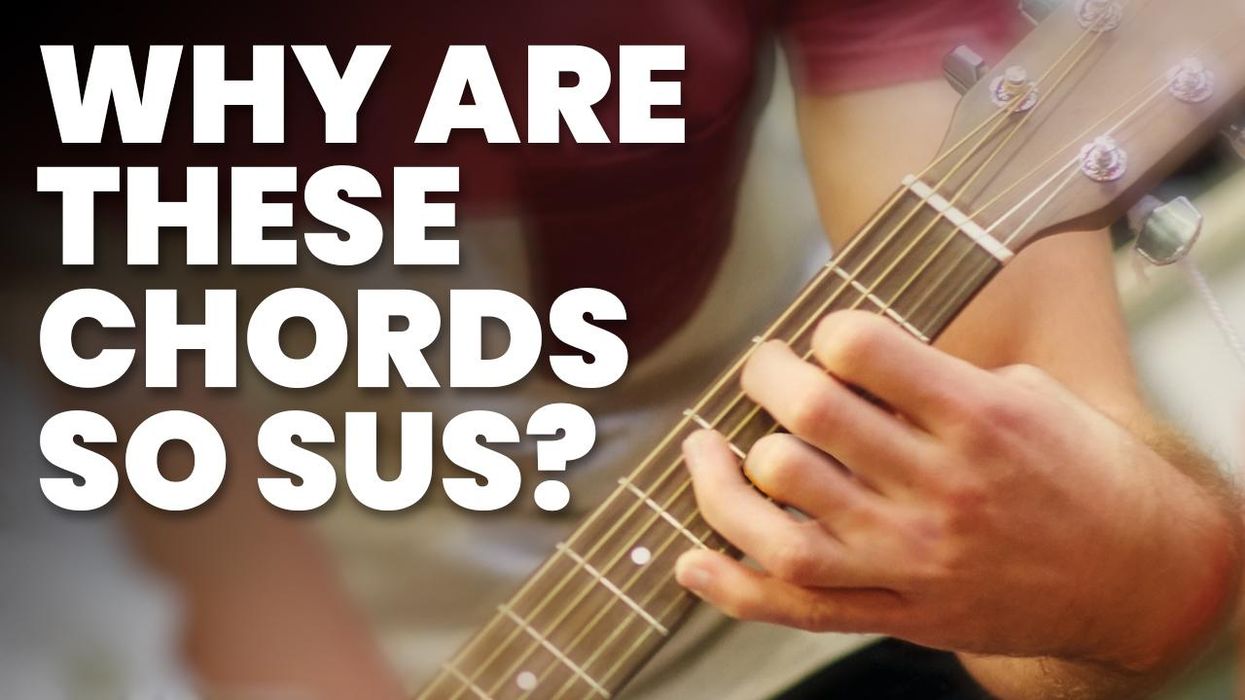Chops: Intermediate
Theory: Intermediate
Lesson Overview:
• Develop your hybrid picking technique.
• Learn about different picking-hand permutations.
• Create your own angular and intervallic phrases.
Click here to download a printable PDF of this lesson's notation.
Much like sweep picking in the dark days of leather-clad metaldom, hybrid picking is a major buzzword in the lexicon of the modern lead guitarist. Apart from the fancy name, there is nothing new about hybrid picking. The concept is simple: Attack the strings with a flatpick and your right-hand fingers.
Though it’s easy to describe, the applications are quite vast. In addition to using the fingers for different timbral possibilities, ghosted notes, or even percussive sounds, you can employ hybrid picking to help you execute difficult string crossings and intervallic lines. When used properly, it can give your playing a certain smoothness that is very hard to achieve with just a pick. And it’s the latter aspect of hybrid picking we’ll cover in this lesson. Although we’ll be firmly entrenched in lead guitar-land, do not hesitate to explore the rhythmic possibilities of this technique as well.
While some players prefer using the flesh of their fingertip, I believe that a little bit of nail will help with your hybrid picking,. Different strokes for different folks! It doesn’t make as much of a difference when playing with gain, but once you go clean, the nails will help with your tone production in big ways.
Now let’s warm up. Our first example (Fig. 1) uses a C whole tone scale (C-D-E-F#-G#-A#). If you aren’t familiar with this scale, its construction is simple: consecutive whole-steps. For this exercise, we’ll play the scale in major thirds moving up a whole-step. This scale is commonly used over dom7#5 chords, maj7#5, or as a tension sound on minor 7 chords (just make sure you choose the scale that starts on the minor chord’s b3). With our picking hand, we’ll alternate between the pick and our middle finger (m in the notation). This is the way jazz great Hank Garland would play many of his lines.
Take this slowly at first because it’s deceptively difficult to play rhythmically even. Instead of using a deep free stroke from the big knuckle of your hand like a classical guitarist would, try to use a small movement and be sure not to pop the string (that’s a great effect, but not what we’re looking for at the moment).
Next, take this idea and explore some permutations. Can you play this sans flatpick by alternating between middle and ring fingers? Pick and ring? Ring and pinky? What would it sound like if you started this pattern on an upbeat? What about playing it in triplets? Quintuplets? If you aren’t exploring the innumerable permutations of a lick that you learn, you’re only scratching the surface. Try anything to get your right hand rhythmically used to placing the plucked note on a different beat. The quicker you free up your right-hand fingers, the quicker hybrid picking will creep into your playing.
Fig. 2 is a fun little C Dorian (C-D-Eb-G-A-Bb) line. Using the middle finger allows the right hand to be a little more relaxed and also helps avoid some tricky picking moves in the second part of the phrase. Pay careful attention to balancing the sound of the plucked notes with the picked and slurred ones. There are some tricky position shifts that were done for articulation reasons. Many times finding the easiest way to play a line is not necessarily the best musical way to play it, so always look for and explore alternate fingerings and positions.
The next lick in Fig. 3 introduces the ring finger (r) into the mix. We’re playing this over a IIm-V-I progression in the key of C, using open-voiced triads to get a more angular sound. The advantage that hybrid picking gives you here becomes quite clear once you launch into the passage. The sequence over Dm outlines Am (A-C-E), C major (C-E-G), and Dm (D-F-A) triads, while the G7 sequence starts with two diminished chords (implying G7b9) and then introducing a few more altered tones (#9 and #5) before resolving to the 3 of C major.
This phrase is notable because you are leading with a right-hand finger. This may seem unnatural at first, but that feeling of unease just means you are trying something new. Apply this concept to more daring harmonic material and you’ll be sure to turn some heads.
Our next workout (Fig. 4) is a very open-sounding phrase that’s fun to play. This one uses the fourth finger (c) of the picking hand. When we ascend, we use a pick-middle-ring-pinky pattern and then descend with a sweep. This picking-hand pattern can be easily applied to more standard arpeggios as well and it would benefit you to explore them. If you haven’t tried using your pinky in your guitar career thus far, now is a good time to start. It is especially important for playing chordal stuff while using the pick and fingers approach. You could use this lick in a number of different harmonic settings, but here we are using it over Dm.
The final example (Fig. 5) is definitely for the adventurous types. It uses hybrid picking, legato, tapping with the middle and ring finger, and string skipping. We are shredding over an F#m7 chord and pretty much sticking to the F# Dorian (F#-G#-A-B-C#-D#-E) sound. In the third measure notice how we’re outlining a C#m (C#-E-G#) arpeggio using what I call a “roll.” This is a quick way to play an arpeggio using the pick, middle, and ring fingers in succession. It is a great alternative to sweeping and sounds a lot smoother to my ears.
Hybrid picking is a deep concept and this lesson, of course, only scratches the surface. Try to take some of the picking patterns contained in these licks and write your own ideas around them. In doing so, you’ll internalize the mechanics involved, and slowly but surely your fingers will start spontaneously joining in while you improvise. Like any new technique, this will not happen overnight. The biggest challenge most of my students face when developing this technique is to generate the motion from the finger itself and not move the hand in any way. Mastering this technique should drastically minimize your right-hand movement. If you’re persistent and patient, hybrid picking will unlock new and scary possibilities in your playing!

